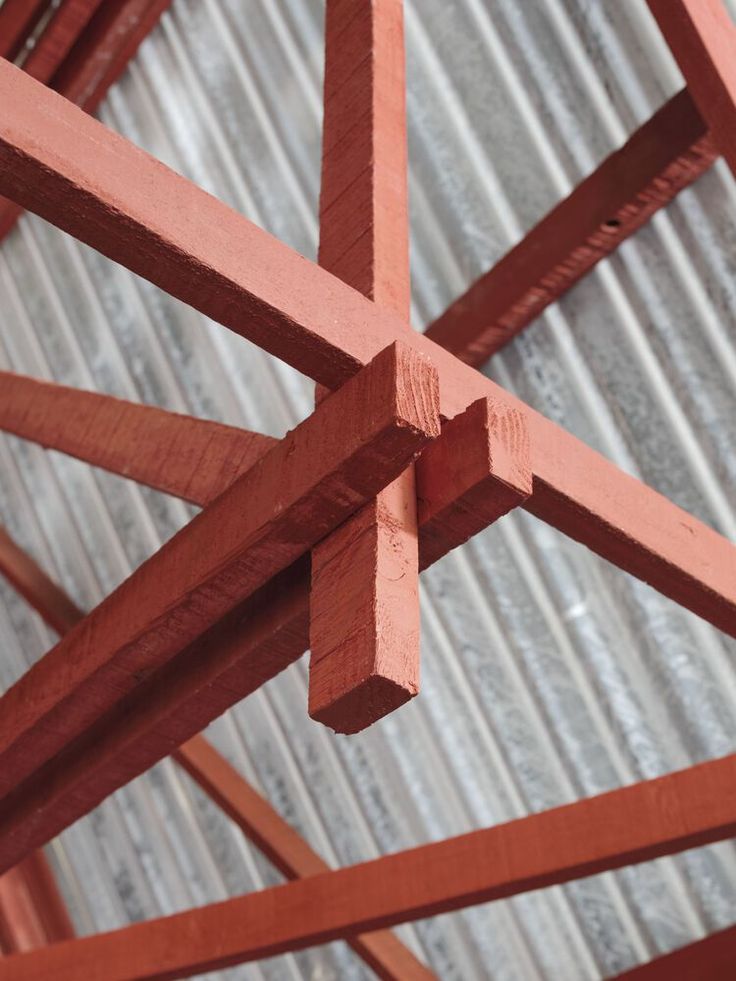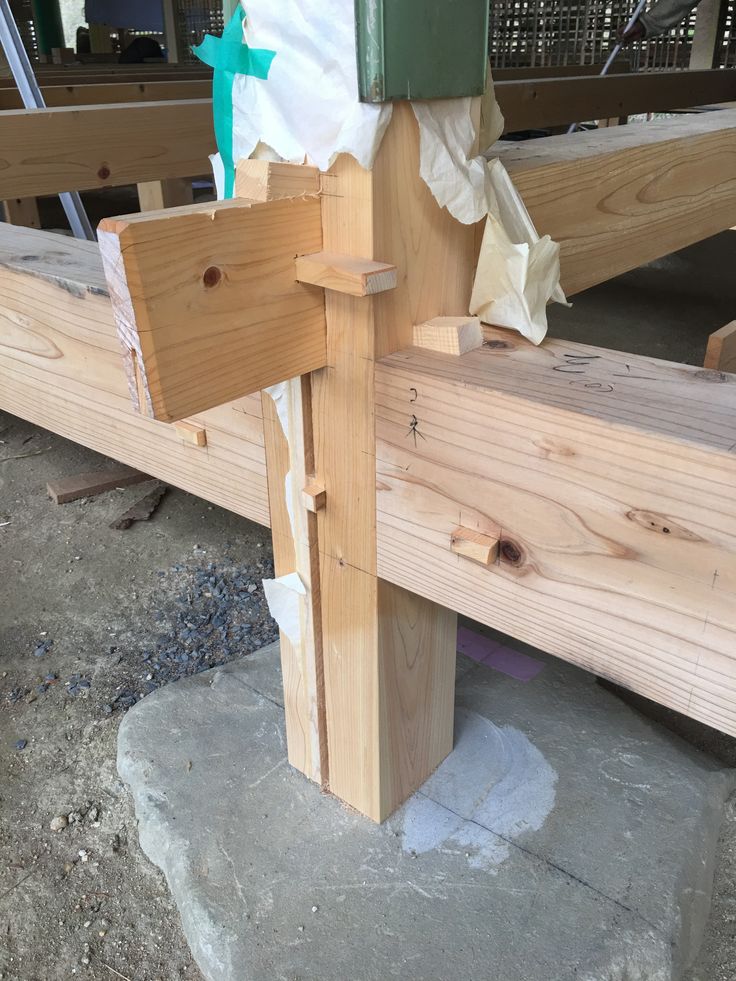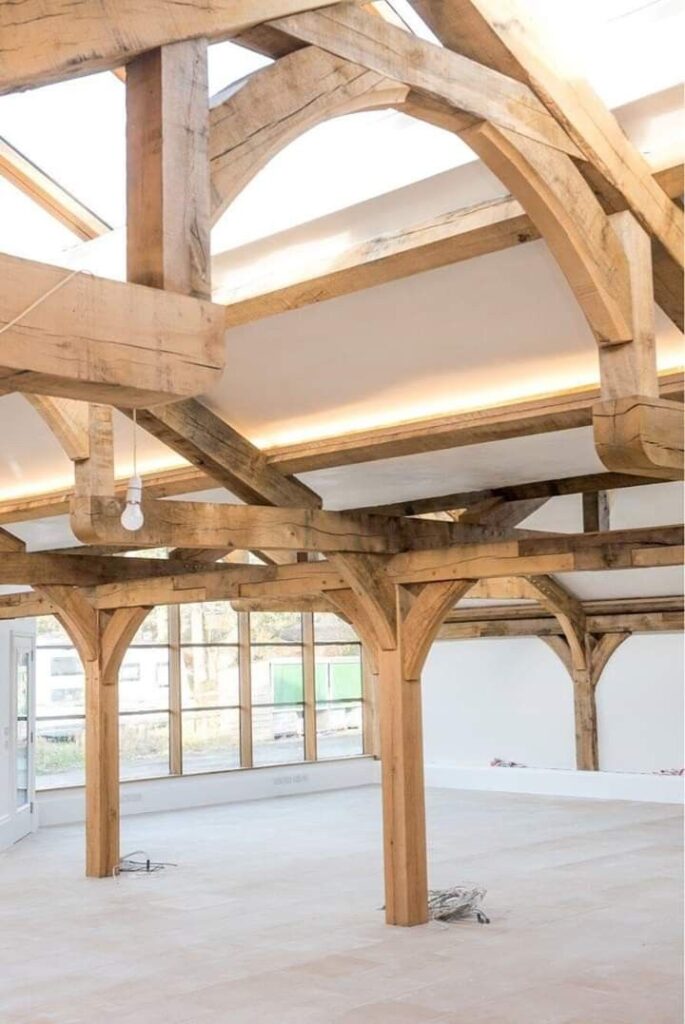The image captures a close-up view of a wooden roof truss system painted in a rich, earthy red tone, set against a corrugated metal sheet background. This intricate assembly of timber beams showcases the precision and craftsmanship essential in modern roofing structures. The following discussion explores the significance, design, and future of such truss systems in contemporary construction.
Roof trusses are the skeletal framework that supports the roof of a building, distributing its weight evenly across the walls and foundation. The example in the image exemplifies a timber truss, a time-tested solution renowned for its strength, versatility, and aesthetic appeal. Timber, a renewable and durable material, continues to be favored in both residential and commercial construction, particularly in regions where wood is abundant and traditional building practices prevail.

The construction technique shown highlights traditional joinery, where wooden members intersect and connect without reliance solely on metal fasteners. This method not only enhances structural integrity but also adds a layer of visual sophistication. Each beam in the truss is meticulously cut and positioned, ensuring that loads are efficiently transferred through the structure. The red paint serves a dual purpose: protecting the wood from moisture, insects, and UV damage, while also enhancing its visual appeal.
In modern commercial construction, roof trusses have evolved significantly. The image depicts a straightforward yet effective design, but advancements in engineering have led to the development of complex truss configurations. From king post and queen post trusses to more elaborate forms like fan trusses and bowstring trusses, the possibilities are endless. These innovations enable architects and engineers to create expansive, open spaces without the need for intermediate supports, a feature highly sought after in commercial buildings such as warehouses, sports arenas, and shopping centers.

The use of trusses in commercial construction offers numerous advantages. First and foremost is their ability to span large distances with minimal material usage. This efficiency not only reduces construction costs but also contributes to sustainability efforts by minimizing resource consumption. Additionally, prefabricated trusses can be manufactured off-site and assembled quickly on location, accelerating the construction timeline and reducing labor costs.
The durability of roof trusses is another key benefit. When properly designed and maintained, they can withstand significant loads, including heavy snow, strong winds, and seismic activity. The precision joinery and protective coatings, as seen in the image, play a crucial role in extending the lifespan of the structure. Regular inspections and maintenance ensure that the trusses remain in optimal condition, safeguarding the building and its occupants.
Aesthetically, exposed timber trusses add a distinctive charm to commercial spaces. The natural warmth and texture of wood create an inviting atmosphere, often complementing modern architectural styles. Designers frequently incorporate visible trusses in retail stores, restaurants, and office spaces to evoke a sense of craftsmanship and authenticity. The red-painted trusses in the image could easily become a focal point in an industrial-themed interior, blending functionality with artistic expression.

Sustainability is an increasingly important consideration in construction, and timber trusses align well with this objective. Wood is a renewable resource that sequesters carbon throughout its lifecycle, contributing to lower greenhouse gas emissions compared to steel or concrete alternatives. Responsible sourcing and certification ensure that the timber used in trusses comes from sustainably managed forests, further supporting environmental stewardship.
The future of trusses in commercial construction is poised for continued innovation. Advances in materials science are leading to the development of engineered wood products, such as laminated veneer lumber (LVL) and cross-laminated timber (CLT), which offer enhanced strength, stability, and fire resistance. These materials enable the creation of even larger and more complex truss systems, expanding the possibilities for architectural design.
Digital technologies are also transforming the truss industry. Building Information Modeling (BIM) allows architects and engineers to design, visualize, and test truss configurations in a virtual environment before construction begins. This reduces errors, optimizes material usage, and ensures seamless integration with other building systems. Additionally, CNC machining and robotic assembly streamline the fabrication process, improving precision and efficiency.

Collaboration between architects, engineers, and craftsmen is essential in realizing the full potential of truss systems. The image serves as a reminder of the artistry involved in constructing these structures. Each cut, joint, and finish reflects a deep understanding of both the material and the forces it must withstand. As construction methods evolve, preserving this craftsmanship while embracing new technologies will be key to creating resilient and inspiring built environments.
In conclusion, the image of the red-painted timber trusses against a corrugated metal backdrop encapsulates the enduring relevance of truss systems in commercial construction. Combining strength, efficiency, and aesthetic appeal, trusses continue to play a vital role in shaping modern architecture. As innovations in materials and digital tools advance, the future of trusses promises even greater possibilities, bridging the gap between tradition and progress. Whether hidden behind ceilings or proudly displayed as architectural features, roof trusses remain an indispensable component of the built world.


